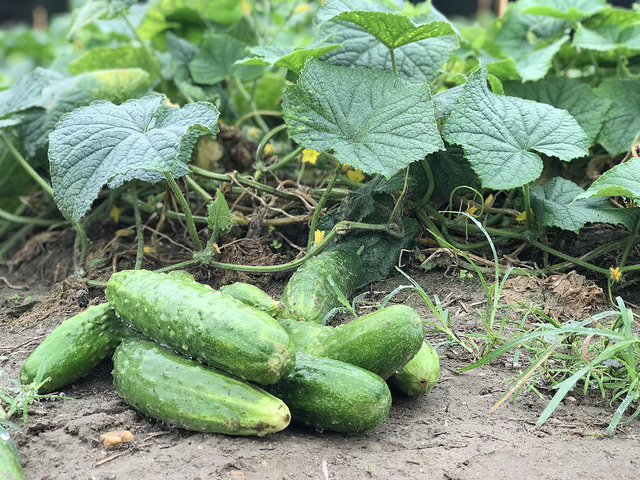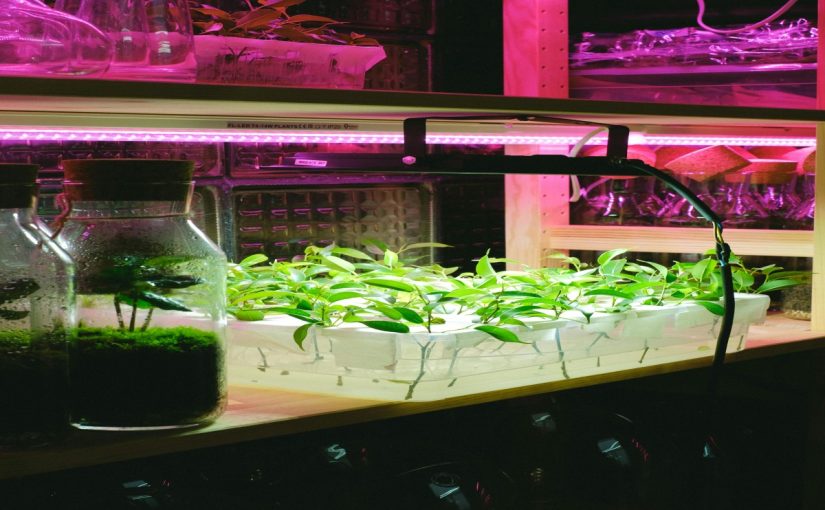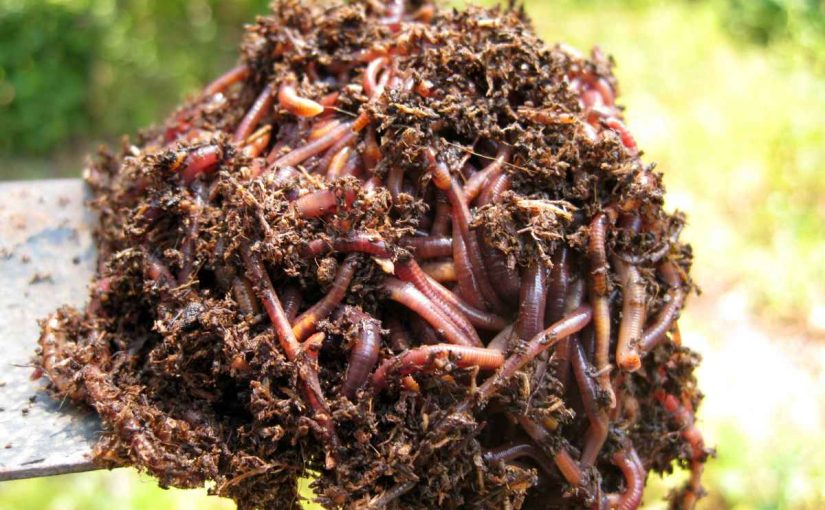Cucumbers are worthy of each salad courtesy it’s health benefits. Cucumbers have a mild, refreshing flavor and a high amount of water. You will also feel dehydrate and enjoy eating them in hot weather. Generally, most of the diet conscious people use cucumber in their diets.
Moreover, it has a variety of applications in several beauty products due to its richness of vitamins and minerals.
Growing Fresh and Crunchy Cucumbers

The fresh cucumbers have a special crunch with every bite. Cucumber farming would be a different experience.
Whatever the space you have, you can grow cucumbers. They can be cultivated in pots, bags or directly on the field successfully.
Also Read: Sweet Potato Farming Information Guide
Two main types of cucumber are outdoor and greenhouse. Plants of greenhouse cucumber make long, smooth fruit similar to those sold in the supermarket.
On the other hand, others are called ridge cucumbers. It’s usually shorter and covered with red skin.
Crunchy cucumbers, fresh from the garden are in a league of their own, so if you’re wondering whether to grow them or not, the answer should be a resounding yes.
Some of the cucumber varieties are more suitable for cucumber farming in the UK, either outdoors or in the greenhouse.
Generally, the outdoor cucumbers also called ‘ridge cucumbers’ have resistance to the cooler climates and are often spiked or rough to the touch. Greenhouse cucumbers are a bit smoother fruits but do need that extra warmth to grow to the full capacity.
Some varieties prefer sheltered environments just like a greenhouse and others mature better out, in a sunny environment.
How to Sow Cucumbers
The mid-spring is the ideal time to sow the cucumber seeds into small pots with a general-purpose potting mix. Sowing depth of cucumber seeds is about an inch 3 cm deep.
Cucumbers germinate at least 20 degrees. This usually takes 7-10 days. Thus, you have to wait for a launch at the end of the spring.
After germination, you should transfer seedlings to the place which has good sunlight and put them there until these are sufficiently large to transplant it.
Once the seedlings start to appear, for better growth of a healthy plant remove the weakest from the pot and leave one per pot.
The liquid fertilizer is better for cucumber farming. Thus, a liquid fertilizer high in potassium is the initial diet plant within every two weeks that keep these hungry plants moist most of the time.
Must Read: How to harvest onions?
Growing Greenhouse Cucumbers
Greenhouse cucumbers can be transplanted into beds, large containers of potting soil. The other way to set the plant to grow is by setting two cucumbers per bag into bottomless pots set on top of the growing bag.
These will help to trap moisture and ensure cucumber plant care every time you water, instead of it running off over the surface.
Put in place supports such as bamboo canes, vertical wires, strong netting or trellis. Train vines up their supports then pinch out the growing tips when they reach the top to encourage side shoots. Take out the tips of side shoots to leave two leaves beyond each fruit.
Feed plants every two weeks with a liquid fertilizer that’s high in potassium and keeps these thirsty plants moist at all times.
You can exclude all male flowers from greenhouse cucumbers. This prevents bitter-tasting fruits. It’s effortless to identify female flowers by the slight swelling of the embryonic fruit behind each bloom.
Growing Outdoor Cucumbers
When the soil warms in late spring or early summer, outdoor cucumbers should be planted. For the perfect plantation, accustom the plant to a newer climate for a week or two preparations slowly for a week or two.
On the other hand, you could sow seeds directly to their actual rising places in warmer climates.
Cucumber farming considers the healthy, fertile soil just like other plants. Thus before planting, you can collect plenty of well-rotted organic matter such as manure.
It is ideal to set the plants at about 18 inches apart when you raise your cucumbers upward using supports like a trellis. Alternatively, position them about three feet from each other if you let them scatter over the soil surface.
The outdoor cucumber needs insect pollination. Therefore, the plant needs the involvement of male and female flowers. Thus, you should not remove the male flowers. There is no need to remove male flowers as greenhouse cucumbers. It is important to have this marriage for better and high yields.
Feeding to the cucumber
Cucumbers are typically grown at the same location as other vegetables in the case of a greenhouse. And, in this case, farmers usually use the same feed for all vegetables.
In the case of the cucumbers are provided the more effective and balanced fertilizer. The yield is higher.
High nitrogen requirement in cucumber feed
A small cucumber plant has a larger leaf that is even greater than the leaves of other plants.
As nitrogen is the fuel for flower growth. Cucumbers need more nitrogen than other major nutrients such as magnesium, calcium, iron, and manganese.
In the case of organic, the high liquid nitrogen feed would benefit cucumber farming to the full capacity.
Cucumber Plant Diseases
1. Powdery Mildew
The fungus emerges first as several white spots on the cucumber leaves and grows quickly as very small, threadlike powdery areas. It seems like a cotton-dumpling demon that absorbs plant nutrients, so if you don’t handle it, it can contribute to a serious infestation. The yield will be greatly affected, even if they mature.
When you just begin to see the mold on the leaves of the cucumber or if you had previous problems and want the chance of powdery mildew to be reduced, milk is an all-natural effective barrier to funguses. Dilute and spray the milk on the plants in the ratio of 10 parts water to 1 part milk.
Baking soda has solid household applications and can be applied to this list as “treating powdery mildew.” A 1 tablespoon soda solution in a gallon of water is adequate to be successful, but a soap or dish soap would need as an additive. Some growers often add oil, neem or standard cooking oil.
Sprinkle the mixture again early in the day, and then rinse in the evening. The persuasive mildew requires a very favorable pH to survive and baking soda is enough essential to render the leaves desolate.
2. Bacterial Wilt
Bacterial wilt affects the fruits in cucumber farming more intensely. Infection is recognized with often witty and dried branches, often even overnight.
One simple way to prevent bacterial wilt is by cutting off a wilted stem at the base and rubbing the cut with your fingertip.
If you take off your finger gradually, the plants have bacterial wilting threads out of the cut. There is no remedy for this cucumber decay.
3. Fusarium wilt
Fusarium wilt is another issue with the cucumber plant which is a difficulty to treat and overcome. In dry climates, the pathogen is much more widespread and can damage, in addition to cucumber, a wide variety of vegetables.
The dropping leaves is the beginning of this disease. This can be identified by the slicing the main trunk of an infected fusarium wilt vine. If it’s the base is spotted with dark stripes. The fungicidal soil drenches the remedy of this infection while treating the soils before plantation can prevent the unfortunate loss.
4. Cucumber Mosaic
At any stage, this disease will invade cucumber plants and the virus spreads systemically in the plant once the plant is infected.
Symptoms appear 7 to 14 days after infection and develop most quickly at low temperatures.
A pale or dark green mosaic or mottling develops first on the youngest leaves. The outer borders curl inward. New leaves are stunted and twisted.
Flowers can exhibit strange properties like green petals. The fruit of contaminated plants is often smaller and somewhat skewed, and display light and dark green mosaic patterns on the surface.
In this case, it is important to buy the treated seeds for cucumber farming that often highlighted at the label.
Harvesting the right cucumber
The cucumbers are best plucked before their seeds become hard as they are preferred eating as immature.
While a yellow and mature cucumber is of the highest quality when it is uniformly green, firm, and crisp.
Cucumbers that are left on the vine for a longer period would get tough skins and eventually lower plant productivity.
You should collect fruits during the cucumber cultivation every few days at full harvest time as they grow rapidly once at the peak.
Storage of Mature Cucumber
Although a fresh cucumber has the highest level of water content and crunchiness.
Cucumbers are over 90 percent water. This is ideal to store them wrapped tightly in plastic wrap to retain moisture. if there is a need to store them for a longer time, you will keep them for a week to 10 days when stored properly in the refrigerator.
Also Read: Growing the Avocado



